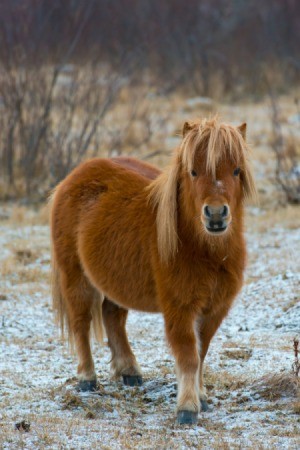 People all over the world love the Shetland pony for its shaggy coat, long mane and tail, and muscular, round body. Considered highly intelligent and unusually strong for its small size, Shetland ponies have earned a reputation for being gentle, patient, and trustworthy with children.
People all over the world love the Shetland pony for its shaggy coat, long mane and tail, and muscular, round body. Considered highly intelligent and unusually strong for its small size, Shetland ponies have earned a reputation for being gentle, patient, and trustworthy with children.
Shetland ponies, or Shelties, are named for the Shetland Islands off the northern coast of Scotland. No one is sure how the ponies originally got there (there is speculation that they arrived with the Vikings during the 800s), but according to stone carvings discovered on the islands, they have been residents for more than 1,000 years. The islands are cold and stormy there are few trees, and strong winds and ocean waves batter the islands much of the year. This harsh climate and combined with a scarce food supply helped the ponies develop their hardy nature.
A History of Hard Labor
The Shetland ponies helped island people plow the island's rocky soil and transport heavy loads to and from the market. Over time they earned a reputation for doing extra-hard work and caught the attention of the British mainlanders. In the mid-1800s, after a change in English child labor laws, many Shetland ponies were taken to the mainland (and also America) and put to work in coal mines. As pit ponies, they were small enough to navigate the low, narrow shafts and strong enough to pull heavy loads of coal. The ponies worked long days in the cold, damp mines and many of them suffered greatly. Many spent their entire lives underground without ever seeing the light of day. By the mid-19th century, it is estimated that as many as 90,000 ponies were working inside the mines.
In England and Scotland, breeders have tried to keep the Shetland pony's original features. But in North America, breeders have changed the look of the Shetland pony through breeding. They've bred it with a taller pony known as the Hackney to create more refined and horse-like physical features. As a result, Shetland ponies in the United States and Canada are less boxy and have longer legs than their cousins in England and Scotland.
Check out these photos.
Our pony's name is Sparky. The granddaughter wanted to name him Sparkle but it was a boy, so she named him Sparky. He is probably 12 years old and is an American Shetland pony.